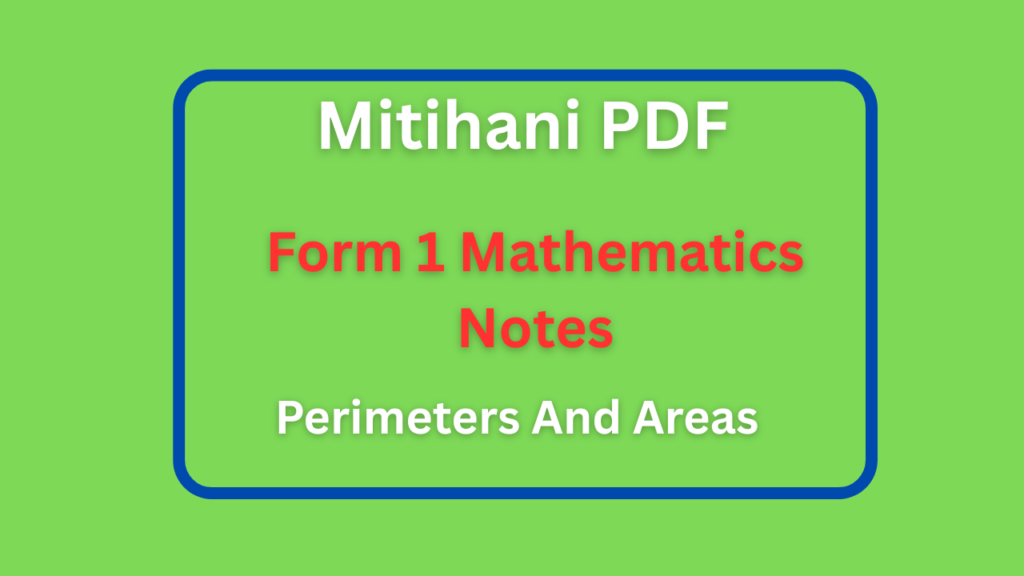Form One Mathematics Notes: Perimeters and Areas
In the Tanzanian Form One Mathematics syllabus, the topic of Perimeters and Areas introduces students to the fundamental concepts of measuring the boundaries and surfaces of two-dimensional shapes. Students learn how to calculate the perimeter of polygons such as rectangles, squares, and triangles by summing the lengths of their sides. For circles, they are introduced to the concept of circumference, using the formula \( C = 2\pi r \) or \( C = \pi d \), where \( r \) is the radius and \( d \) is the diameter. Additionally, they explore the area of common shapes, including rectangles (\( A = length \times width \)), squares (\( A = side^2 \)), and triangles (\( A = \frac {1}{2} \times base \times height \)). Practical applications, such as finding the area of a classroom or fencing a garden, help reinforce these concepts.
The syllabus also emphasizes real-life problem-solving, where students apply their knowledge to calculate composite shapes by breaking them into simpler figures. For instance, they may find the area of an L-shaped field by dividing it into two rectangles. Units of measurement, such as meters (m) for perimeter and square meters (m²) for area, are also highlighted to ensure accuracy. Teachers often incorporate hands-on activities, such as measuring school grounds or drawing shapes on graph paper, to enhance understanding. By mastering perimeters and areas, students build a strong foundation for more advanced topics in geometry, such as surface area and volume, which are covered in later forms. This topic aligns with the competency-based curriculum by developing practical mathematical skills essential for everyday life.

